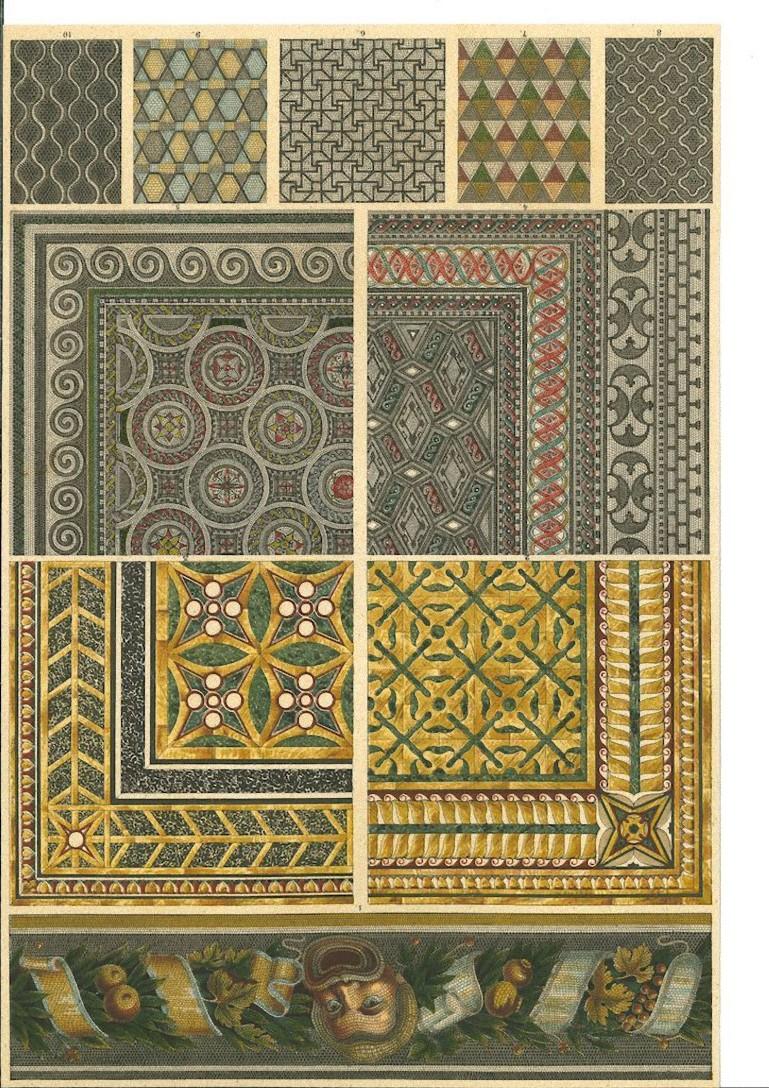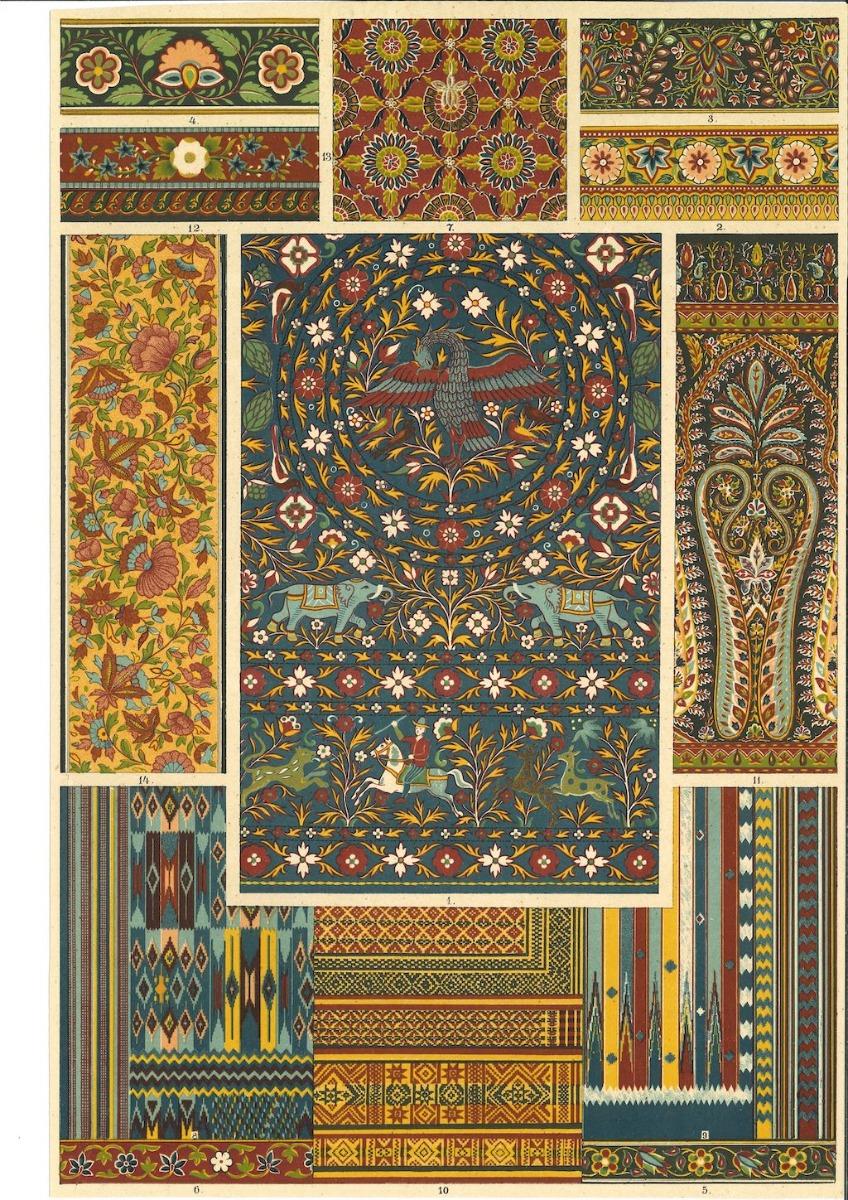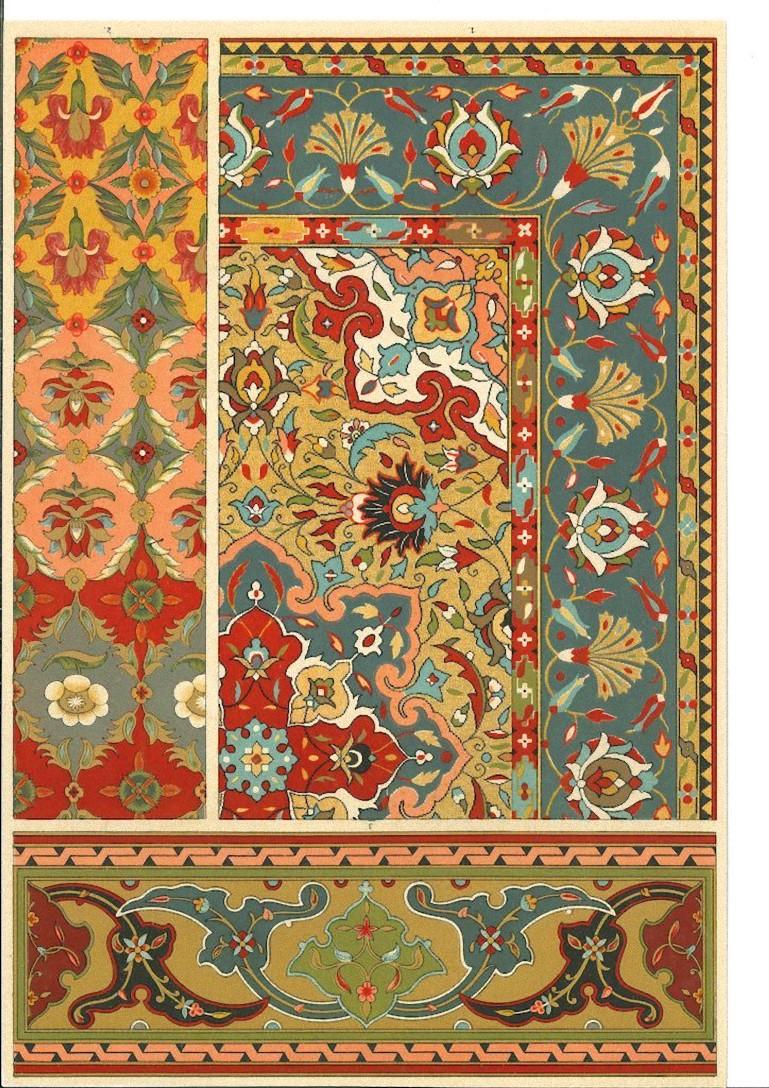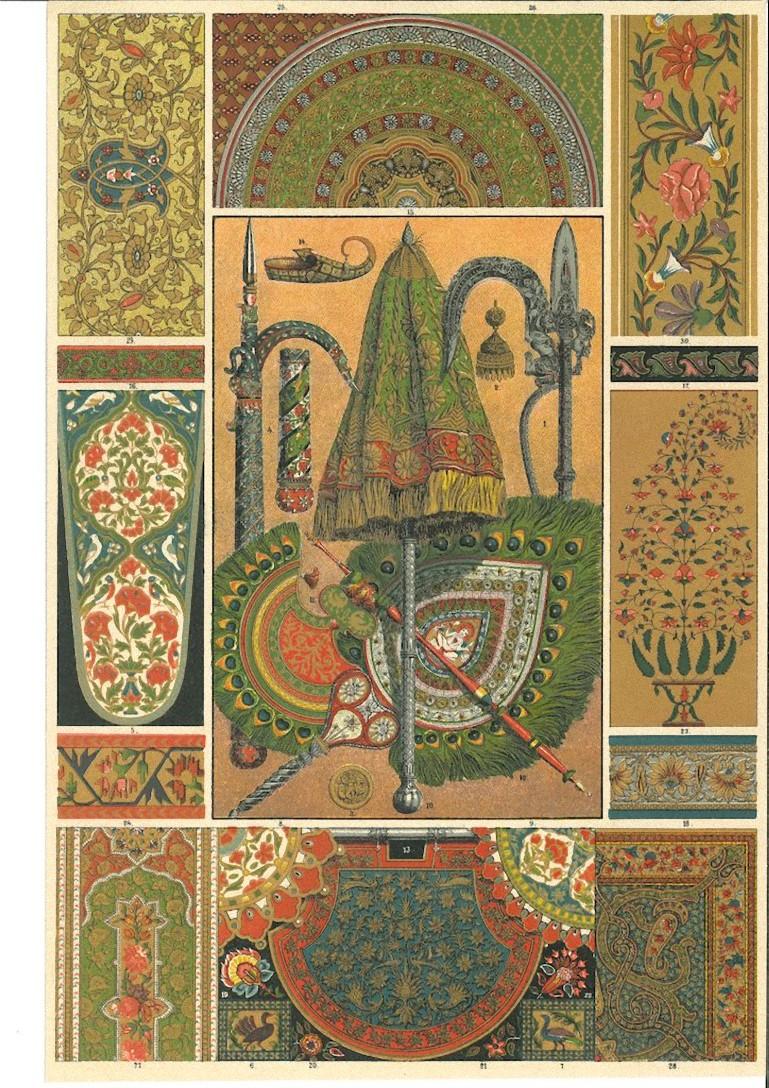Items Similar to Decorative Motifs of the German Renaissance -Chromolithograph-Early 20th Century
Want more images or videos?
Request additional images or videos from the seller
1 of 2
UnknownDecorative Motifs of the German Renaissance -Chromolithograph-Early 20th Century Early 20th Century
Early 20th Century
About the Item
Decorative motifs of the German Renaissance is a vintage chromolithograph by an anonymous artist of the early 20th Century.
Good conditions.
The artwork represents Decorative motifs of the German Renaissance in a well-balanced composition.
- Creation Year:Early 20th Century
- Dimensions:Height: 11.82 in (30 cm)Width: 7.88 in (20 cm)Depth: 0.04 in (1 mm)
- Medium:
- Period:
- Framing:Framing Options Available
- Condition:Insurance may be requested by customers as additional service, contact us for more information.
- Gallery Location:Roma, IT
- Reference Number:Seller: M-1168871stDibs: LU65037775662
About the Seller
4.9
Platinum Seller
These expertly vetted sellers are 1stDibs' most experienced sellers and are rated highest by our customers.
1stDibs seller since 2017
6,693 sales on 1stDibs
Typical response time: 2 hours
- ShippingRetrieving quote...Ships From: Grasse, France
- Return PolicyA return for this item may be initiated within 14 days of delivery.
Auctions on 1stDibs
Our timed auctions are an opportunity to bid on extraordinary design. We do not charge a Buyer's Premium and shipping is facilitated by 1stDibs and/or the seller. Plus, all auction purchases are covered by our comprehensive Buyer Protection. Learn More
More From This SellerView All
- Eight Sculptural Ideas - Lithograph by Henry Moore - 1973By Henry MooreLocated in Roma, ITEight Sculptural Ideas is an original lithograph realized by the British artist Henry Moore (Castleford, 1898 - Much Hadham, 1986). Hand-signed and...Category
1970s Contemporary More Prints
MaterialsPaper, Lithograph
- Decorative Motifs - Original Chromolithograph - Early 20th CenturyLocated in Roma, ITDecorative Motifs of the Indian Renaissance is a vintage chromolithograph realized by an anonymous artist in the early 20th Century. Good conditions. The artwork represents Decorat...Category
Early 20th Century More Prints
MaterialsPaper, Lithograph
- Decorative Motifs - Original Chromolithograph - Early 20th CenturyLocated in Roma, ITDecorative Motifs of the Indian Renaissance is a vintage chromolithograph realized by an anonymous artist in th early 20th Century. Good conditions.Category
Early 20th Century More Prints
MaterialsPaper, Lithograph
- Decorative Motifs of the Persian Renaissance - Chromolithograph - 20th CenturyLocated in Roma, ITDecorative Motifs of the Persian Renaissance is a vintage chromolithograph realized by an anonymous artist in the early 20th Century. Good conditions. The artwork represents Decora...Category
Early 20th Century More Prints
MaterialsPaper, Lithograph
- Decorative Motifs - Original Chromolithograph - Early 20th CenturyLocated in Roma, ITDecorative Motifs of the Indian Renaissance is a vintage chromolithograph realized by an anonymous artist in the early 20th Century, Good conditions.Category
Early 20th Century More Prints
MaterialsPaper, Lithograph
- Roman Decorative Motifs -Vintage Chromolithograph - Early 20th CenturyLocated in Roma, ITRoman Decorative motifs is a vintage chromolithograph realized by an anonymous artist. Good conditions. The artwork represents Roman Decorative motifs in a well-balanced composition.Category
Early 20th Century More Prints
MaterialsPaper, Lithograph
You May Also Like
- India Listed artist 19th Century Hand Coloured Lithograph Village scene palmsLocated in Norfolk, GBA 19th century, hand coloured lithograph, the colours fresh and in good condition for its age. Artist: Captain Philip Meadows Medium: Hand coloured lithograph Plate 6 Created: 1842 Paper Size: 39 x 32.5 cm Plate Size: 27.5 x 21.2 cm With the description sheet on verso TAYLOR, Captain Philip Meadows (1808-1876). Plate from Sketches in the Deccan. London: published by J McLean 1842 Plate 6 From a series of views of the Deccan, at this time the state of Hyderabad. The suite of plates includes views, scenes and settings of places and buildings at Goa, Arungabad, Tooljapoor, Golcondag, Hyderabad, Ellors, Rozah, and the Tandoor hills, among others. Meadows Taylor arrived in India as a young man to work with a Bombay merchant, but quickly accepted a military commission...Category
1840s Other Art Style Landscape Prints
MaterialsLithograph, Paper
- Hardback monograph: The Gay 90's (Hand signed by Mark Ryden)By Mark RydenLocated in New York, NYMark Ryden The Gay 90's (Hand signed by Mark Ryden), 2013 Hardback monograph (hand signed by Mark Ryden) Boldy signed by Mark Ryden 12 1/4 × 9 1/4 × 1 inches This elegant hardback monograph with illustrated covers and no dust jacket, as issued, was signed by the artist for the present owner at the exhibition "Mark Ryden: Dodecahedron" at the Paul Kasmin Gallery on December 10, 2015. It makes an excellent gift! Publisher : Rizzoli; First Edition (April 16, 2013) Hardcover : 146 pages with color illustrations Publisher's blurb: Celebrated Pop Surrealist artist Mark Ryden’s newest body of work, presented in this book for the first time. Crowned "the high prince of Lowbrow," Mark Ryden has become a fixture of the contemporary alternative art movement. In his newest work, Mark Ryden: The Gay 90’s, the artist casts...Category
2010s Contemporary More Art
MaterialsPaper, Ink, Mixed Media, Lithograph, Offset, Board
- Large 1960s French Art Brut Lithograph Bold Black & White Op Art Philippe DereuxLocated in Surfside, FLPrinted by Pierre Chave, Vence, published by Bianchi Frères in Nice, France ink on watermarked chiffon de Mandeure paper, hand signed in pencil lower right, "PH Dureux," numbered 4/5...Category
1960s Outsider Art Abstract Prints
MaterialsArchival Paper, Lithograph
- Large 1960s French Art Brut Lithograph Bold Black & White Op Art Philippe DereuxLocated in Surfside, FLprinted by Pierre Chave, Vence, published by Bianchi Frères in Nice, France ink on watermarked chiffon de Mandeure paper, hand signed in pencil lower right, "PH Dureux," numbered 4/5...Category
1960s Outsider Art Abstract Prints
MaterialsArchival Paper, Lithograph
- Large 1960s French Art Brut Lithograph Bold Black & White Op Art Philippe DereuxLocated in Surfside, FLprinted by Pierre Chave, Vence, published by Bianchi Frères in Nice, France ink on watermarked chiffon de Mandeure paper, hand signed in pencil lower right, "PH Dureux," numbered 4/5...Category
1960s Outsider Art Abstract Prints
MaterialsArchival Paper, Lithograph
- Colossal Flashlight in Place of Hoover DamBy Claes OldenburgLocated in Missouri, MOColossal Flashlight in Place of Hoover Dam, 1982 By Claes Oldenburg (Swedish, American, 1929-2022) Signed Lower Right Dated Middle Right Unframed: 23" x 22" Framed: 36.5" x 27.5" Whimsical sculpture of pop culture objects, many of them large and out-of-doors, is the signature work of Swedish-born Claes Oldenburg who became one of America's leading Pop Artists. He was born in Stockholm, Sweden. His father was a diplomat, and during Claes' childhood moved his family from Stockholm to a variety of locations including Chicago where the father was general consul of Sweden and where Oldenburg spent most of his childhood. He attended the Latin School of Chicago, and then Yale University where he studied literature and art history, graduating in 1950, the same year Claes became an American citizen. Returning to Chicago, he enrolled at the Art Institute of Chicago from 1952 to 1954 and also worked as a reporter at the City News Bureau. He opened his own studio, and in 1953, some of his satirical drawings were included in his first group show at the Club St. Elmo, Chicago. He also painted at the Oxbow School of Painting in Michigan. In 1956, he moved to New York where he drew and painted while working as a clerk in the art libraries of Cooper-Union Museum for the Arts of Decoration. Selling his first artworks during this time, he earned 25 dollars for five pieces. Oldenburg became friends with numerous artists including Jim Dine, Red Grooms and Allan Kaprow, who with his "Happenings" was especially influential on Oldenburg's interest in environmental art. Another growing interest was soft sculpture, and in 1957, he created a piece later titled Sausage, a free-hanging woman's stocking stuffed with newspaper. In 1959, he had his first one-man show, held at the Judson Gallery at Washington Square. He exhibited wood and newspaper sculpture and painted papier-mache objects. Some viewers of the exhibit commented how refreshing Oldenburg's pieces were in contrast to the Abstract Expressionism, a style which much dominated the art world. During this time, he was influenced by the whimsical work of French artist, Bernard Buffet, and he experimented with materials and images of the junk-filled streets of New York. In 1960, Oldenburg created his first Pop-Art Environments and Happenings in a mock store full of plaster objects. He also did Performances with a cast of colleagues including artists Lucas Samaras, Tom Wesselman, Carolee Schneemann, Oyvind Fahlstrom and Richard Artschwager, dealer Annina Nosei, critic Barbara Rose, and screenwriter Rudy Wurlitzer. His first wife (1960-1970) Pat Muschinski, who sewed many of his early soft sculptures, was a constant performer in his Happenings. This brash, often humorous, approach to art was at great odds with the prevailing sensibility that, by its nature, art dealt with "profound" expressions or ideas. In December 1961, he rented a store on Manhattan's Lower East Side to house "The Store," a month-long installation he had first presented at the Martha Jackson Gallery in New York. This installation was stocked with sculptures roughly in the form of consumer goods. Oldenburg moved to Los Angeles in 1963 "because it was the most opposite thing to New York I could think of". That same year, he conceived AUT OBO DYS, performed in the parking lot of the American Institute of Aeronautics and Astronautics in December 1963. In 1965 he turned his attention to drawings and projects for imaginary outdoor monuments. Initially these monuments took the form of small collages such as a crayon image of a fat, fuzzy teddy bear looming over the grassy fields of New York's Central Park (1965) and Lipsticks in Piccadilly Circus, London (1966). Oldenburg realized his first outdoor public monument in 1967; Placid Civic Monument took the form of a Conceptual performance/action behind the Metropolitan Museum of Art, New York, with a crew of gravediggers digging a 6-by-3-foot rectangular hole in the ground. Many of Oldenburg's large-scale sculptures of mundane objects elicited public ridicule before being embraced as whimsical, insightful, and fun additions to public outdoor art. From the early 1970s Oldenburg concentrated almost exclusively on public commissions. Between 1969 and 1977 Oldenburg had been in a relationship with Hannah Wilke, feminist artist, but in 1977 he married Coosje van Bruggen, a Dutch-American writer and art historian who became collaborator with him on his artwork. He had met her in 1970, when she curated an exhibition for him at the Stedelijk Museum in Amsterdam. Their first collaboration came when Oldenburg was commissioned to rework Trowel I, a 1971 sculpture of an oversize garden tool, for the grounds of the Kröller-Müller Museum in Otterlo, the Netherlands. Oldenburg has officially signed all the work he has done since 1981 with both his own name and van Bruggen's. In 1988, the two created the iconic Spoonbridge and Cherry sculpture for the Walker Art Center in Minneapolis, Minnesota that remains a staple of the Minneapolis Sculpture Garden as well as a classic image of the city. Typewriter Eraser...Category
20th Century American Modern Abstract Prints
MaterialsPaper, Lithograph
Recently Viewed
View AllMore Ways To Browse
Early Renaissance
German Renaissance
Vintage Renaissance Art
Shepard Fairey Justice
Vintage Vineyard Map
Hirst Rainbow
Equestrian Poster
Folon Poster
Damien Hirst Rainbow
Vintage F1 Poster Art Posters
Cote De Azur Poster
Miniature Art Botanical Print
Mauro Oliveira All We Need
Soviet Space Race Poster
Swedish Flag
Vintage Surf Poster Art
Ptolemy Geographia
Vintage Us Navy Posters





